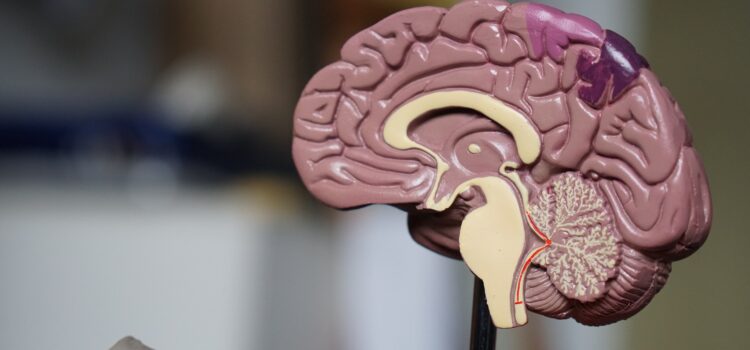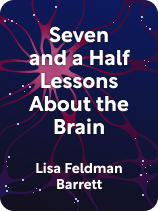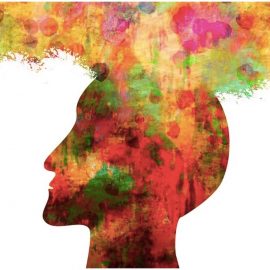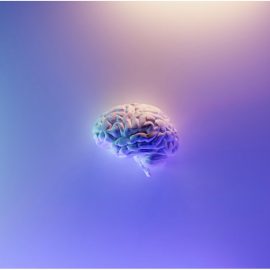

This article is an excerpt from the Shortform book guide to "Seven and a Half Lessons About the Brain" by Lisa Feldman Barrett. Shortform has the world's best summaries and analyses of books you should be reading.
Like this article? Sign up for a free trial here.
What is the lizard brain myth? Why have scientists debunked this myth?
There’s a neuroscience myth that claims a small part of the brain functions entirely on instinct, like a lizard’s. However, Lisa Feldman Barrett’s book Seven and a Half Lessons About the Brain debunks this theory, saying our brains are different than other animals’ brains.
Continue reading to learn why the lizard brain myth isn’t true.
We Can’t Know How the Brain Works Based on Appearance Alone
Barrett argues that the way we traditionally think of the human brain is based on outdated research. There’s a popular belief that the human brain has three distinct parts, each with distinct functions: a brain core (or “lizard brain”), a limbic system, and a neocortex. The three-layer model of the brain has long been used as “proof” that the human brain is more evolved than other animal brains.
The lizard brain myth became popular in the mid-20th century when doctor Paul MacLean identified structural similarities and differences among the brains of different animals:
- Humans, mammals, and lizards have similar-looking brain cores. He called this the lizard brain because it was thought to be a remnant of prehistoric animals, and he argued it was the seat of instinctual behavior—something all animals seem to share.
- Humans and mammals share the next layer of the brain, one that lizards don’t have. MacLean called it the limbic system and argued it was the seat of emotions, believing that only mammals (including humans) were capable of having emotions.
- Only humans have a neocortex, the outer layer of the brain, which he argued is the seat of rational thinking. This last layer is supposed to be unique to humans and hence the seat of our uniquely human capacities.
Barrett says that researchers debunked this model in the late 20th century, yet the general public still believes it to be true.
The problem is that this model relies on what brains look like to deduce what they can do. To combat this error, Barrett explains three truths about our brain’s structure and how it functions.
First, several parts of the brain are needed, for example, to breathe, to feel angry, or to make a plan. It’s not accurate to say that there’s one specific part of the brain that deals with a specific function. (Shortform note: The understanding that several parts of the brain collaborate to perform specific tasks also debunks the common myth that the left and right hemispheres have distinct functions. While books such as The Whole-Brain Child argue that the right side of the brain deals with emotions while the left deals with rational thought, this is inaccurate.)
Second, appearance and location aren’t the only determining factors of a neuron’s function. When researchers studied neurons (nerve cells) more closely, they found that neurons from animals and humans can look very different or be found in different parts of each brain, yet have similar genetic structures. Thus, different animals can have brain cores that look similar, for instance, but that doesn’t mean that they’re responsible for primitive, instinctual functions that we believe all animals share. Likewise, just because the outer layer of our brains (the neocortex) looks different from other animals’, it doesn’t mean that the animals lack the function that our neocortex plays.
(Shortform note: Researchers have found that a neuron’s development process can also determine its function. Looking at the development of fruit flies’ brains, they discovered that young neurons can have the same genetic information but trigger different genes within that information, resulting in widely different adult neurons. Researchers say this information has important implications for future studies of neurodevelopmental disorders, such as attention-deficit/hyperactivity disorder (ADHD), learning disabilities, and cerebral palsy.)
Third, most brains, including the human brain, a monkey’s brain, and a lizard’s brain, develop in the same order. According to Barrett, the difference is that they develop different parts for different lengths of time. For example, all mammals and reptiles have a cerebral cortex (part of the neocortex), but the human cerebral cortex spends more time developing so it becomes larger and more complex than that of a monkey or lizard.
(Shortform note: Even different species of our ancestors developed at different paces. For example, the brains of Australopithecus afarensis, a hominid that lived between 3.85 and 2.95 million years ago, were 20% larger than the brains of chimpanzees and took much longer to develop. Much like modern-day humans, their brains continued to develop during childhood, making them dependent on adults of the species for a longer time.)
Thus, Barrett argues that human brains aren’t more evolved than others, as the lizard brain myth of the three-layer brain would have us believe. Our brains just evolved differently from other animals, in a specific trajectory that made us who we are today—good at reading books, but bad at sleeping with our eyes open to stay aware of our surroundings, like guinea pigs.
(Shortform note: Not only did our brains not evolve more than others’, they might also have not evolved as differently as we think. For example, some evidence shows that monkeys also have some ability to use symbolic reasoning, albeit to a much lesser degree than humans. Some other species, such as dogs and primates, also have the “human” ability to read emotions.)
The Impact of the Lizard Brain Myth
The lizard brain myth was further popularized by books such as Simon Sinek’s Start With Why, where he puts forward a model for finding a person’s or organization’s purpose that mimics how the three-layer brain allegedly works. Sinek’s “Golden Circle” model consists of three concentric circles, each representing one of the core concepts in his theory:
1. The inner circle is the Why: the purpose that orients everything you do. It’s the core belief that motivates you to get out of bed in the morning. Why originates from and appeals to the limbic system—which, he argues, processes emotions and generates “gut feelings.”.
2. The middle circle is the How: the methods and practices that characterize you and that other people consider your strengths. How corresponds to both the limbic system, which handles decision-making, and the neocortex, which controls rational thought and language. 3. The outer circle is the What: the outputs you generate. It’s the tangible part of your organization or life and the easiest to identify. What appeals to the neocortex, which he argues is well-equipped to process factual information.

———End of Preview———
Like what you just read? Read the rest of the world's best book summary and analysis of Lisa Feldman Barrett's "Seven and a Half Lessons About the Brain" at Shortform.
Here's what you'll find in our full Seven and a Half Lessons About the Brain summary:
- How the human brain develops and operates
- Why the brain isn't organized in the way you thought it was
- How brains collaborate with one another






